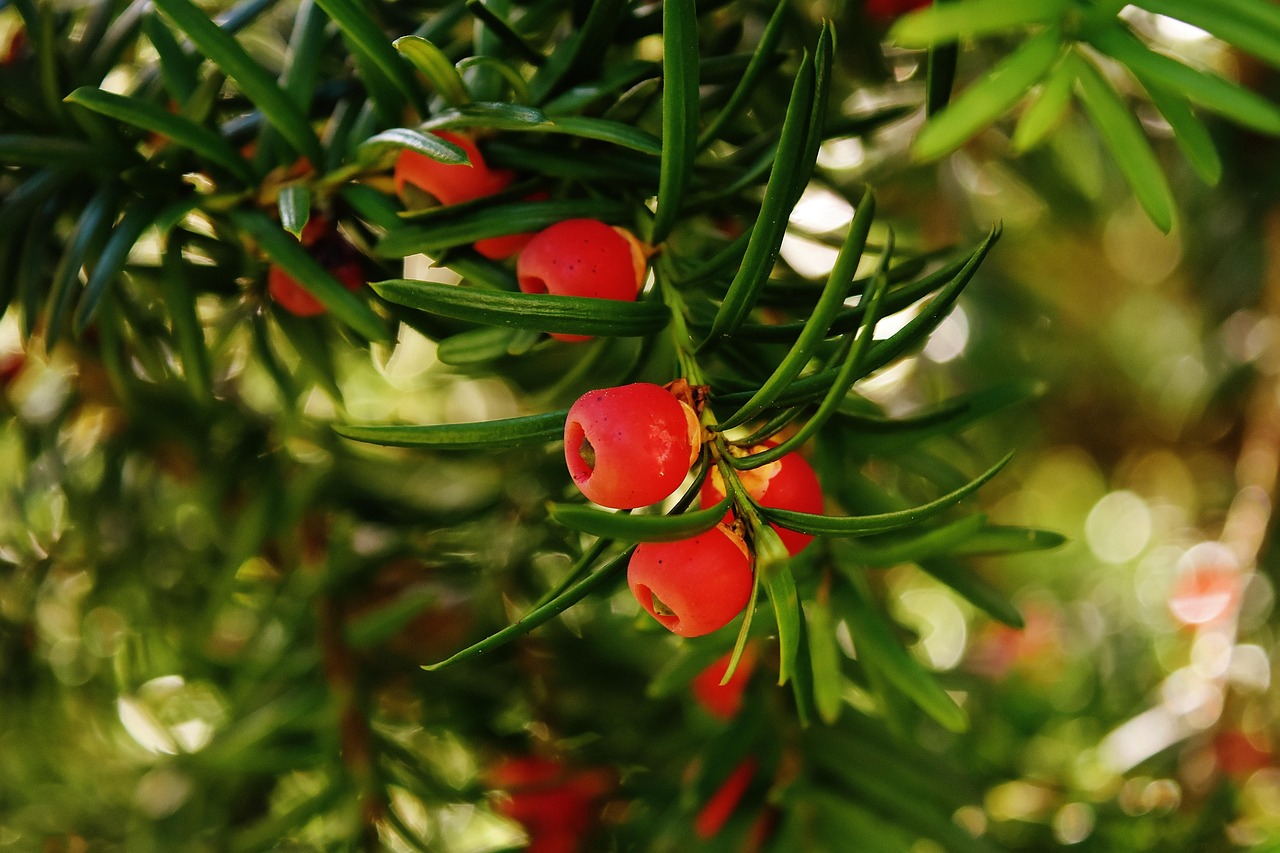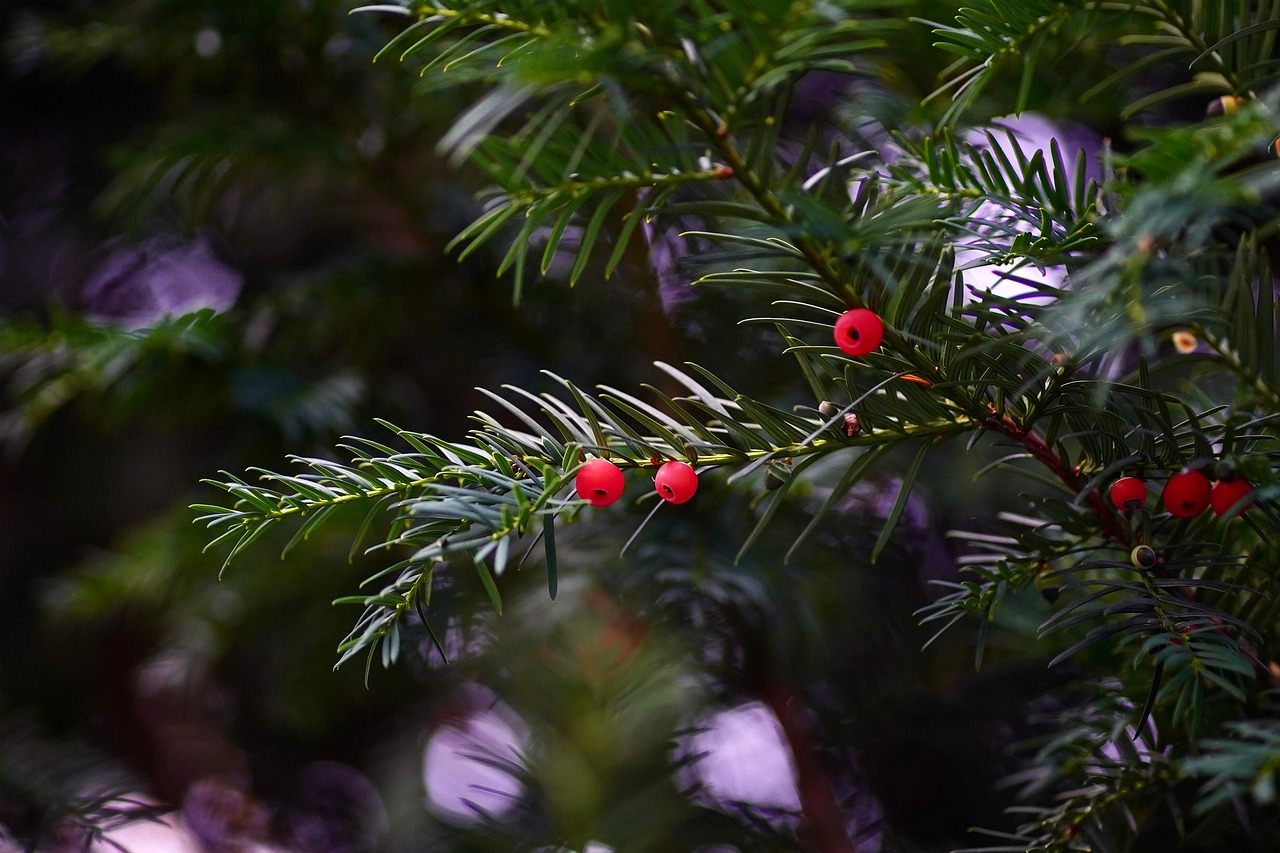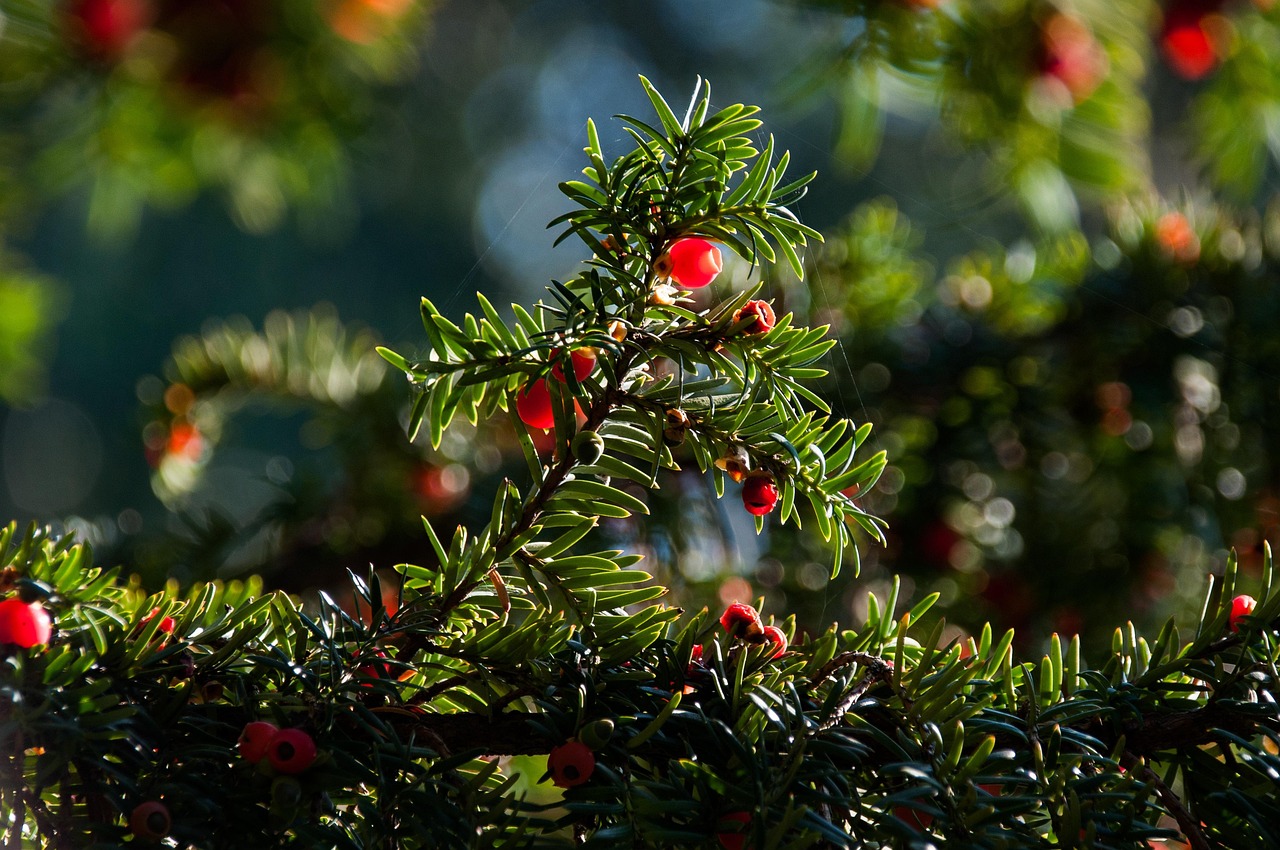The growth rate of yew trees in Old School RuneScape (OSRS) is significantly faster than in real life. In OSRS, yew trees can be grown and harvested within a few hours, while in reality, yew trees take several decades to reach maturity.
Understanding Yew Trees
Yew trees, belonging to the Taxus genus, are known for their longevity and dense, evergreen foliage. They are commonly found in Europe, Asia, and North America. Yews have been historically significant due to their use in various applications, including medicine and archery. In addition, these trees are commonly associated with graveyards and sacred spaces due to their resilience and symbolic meanings.

In the gaming world, specifically in Old School RuneScape (OSRS), yew trees serve a crucial role. Players can chop them down to obtain logs used for crafting bows and other items. This aspect of gameplay has led to a unique portrayal of yew tree growth that does not align with real-life expectations.
Growth Rates in Real Life vs. OSRS
Yew trees exhibit slow growth rates in nature. Under ideal conditions, a yew tree may grow about 12 to 24 inches per year during its early years. However, it can take anywhere from 30 to 50 years for a yew tree to reach its full height of 30 to 60 feet. The following table summarizes the growth characteristics of yew trees in real life:
| Characteristic | Details |
|---|---|
| Growth Rate | 12 to 24 inches per year |
| Maturity Time | 30 to 50 years |
| Full Height | 30 to 60 feet |
| Common Locations | Europe, Asia, North America |
In contrast, the growth rate of yew trees in OSRS is dramatically accelerated. Players can plant yew saplings and see them fully grown within a matter of hours, making them an appealing option for players looking to gain resources quickly. The game mechanics simplify this process significantly compared to real life.

Factors Influencing Growth Rates
The differing growth rates between OSRS and real life can be attributed to several factors. In real life, the growth of a yew tree is influenced by various environmental conditions, including soil quality, water availability, and climate. These natural factors can either promote or hinder growth.
- Soil Quality: Yews prefer well-drained soils and can struggle in compacted or poor-quality soils.
- Water Availability: Adequate moisture is essential for optimal growth. Too much or too little water can adversely affect the tree.
- Climate: Yews thrive in temperate climates but can be sensitive to extreme temperatures and weather conditions.
On the other hand, OSRS eliminates these complexities. The game environment allows players to grow yew trees rapidly without any consideration for soil health or climate conditions. This design choice enhances gameplay by providing instant gratification and resource availability.
The Role of Yew Trees in OSRS Gameplay
In OSRS, yew trees are a vital resource for players engaging in woodcutting and crafting activities. The logs obtained from yew trees can be used to create various types of bows, which are essential for combat and leveling up skills. This dynamic encourages players to focus on growing and harvesting yew trees effectively.

The simplified growth mechanics contribute to a more engaging experience for players who enjoy resource management and skill development. As players advance in the game, they often look for efficient ways to maximize their time spent harvesting resources. Yew trees fit perfectly into this strategy due to their quick growth cycle in the game.
Overall, the differences in yew tree growth rates between OSRS and real life highlight the contrast between gaming mechanics and natural processes. Understanding these differences can enhance the gaming experience for players who appreciate the nuances of resource management within Old School RuneScape.
Comparison of Yew Tree Uses in OSRS and Real Life
The utility of yew trees varies significantly between real life and Old School RuneScape. In the real world, yew trees are valued for their wood, medicinal properties, and ecological significance. In OSRS, however, players utilize yew trees primarily for crafting and leveling up skills. This section will explore these differences in greater detail.

Real-Life Uses of Yew Trees
Yew trees have a variety of practical applications due to their unique properties. Here are some notable uses:
- Woodworking: The wood of yew trees is dense and flexible, making it ideal for crafting bows and furniture.
- Medicinal Properties: Certain compounds found in yew trees have been used in traditional medicine and are also critical in developing cancer treatment drugs.
- Landscaping: Yews are commonly used in landscaping due to their aesthetic appeal and ability to withstand pruning.
- Ecological Role: Yew trees provide habitat for various wildlife species, contributing to biodiversity.
OSRS Uses of Yew Trees
In contrast, the uses of yew trees in OSRS are focused largely on gameplay mechanics. The following are the primary ways players interact with yew trees:
- Woodcutting: Players can chop down yew trees to obtain yew logs, which are essential for training the woodcutting skill.
- Crafting Bows: Yew logs can be crafted into yew bows, a popular weapon choice among players due to their effectiveness.
- Fletching: Players can use yew logs to create arrows, further enhancing their combat capabilities.
- Experience Points: Chopping yew trees and crafting items from them grant players valuable experience points, essential for leveling up.
Cultural Significance of Yew Trees
The cultural importance of yew trees extends across various societies. In many cultures, yews symbolize immortality and protection. This section will highlight some notable cultural associations with yew trees.
Cultural Associations
- Ancient Civilizations: Many ancient cultures revered yew trees as sacred. They were often planted in cemeteries and around sacred sites.
- Folklore: In European folklore, yews are often associated with death and resurrection, reflecting their long lifespan.
- Celtic Traditions: The Celts viewed the yew as a symbol of wisdom and longevity, often incorporating it into their rituals.
Yew Trees in Literature and Art
Yew trees have also made their mark in literature and art. Their symbolism often represents themes of death, rebirth, and eternity. Here are a few examples:
- Poetry: Yew trees frequently appear in poetry as symbols of mortality and the passage of time.
- Paintings: Artists have used the contrasting dark green foliage of yews against lighter backgrounds to create striking visual representations.
- Mythology: Many myths feature yews as central elements, often tied to stories about the afterlife or spiritual journeys.
Environmental Impact of Yew Trees
The environmental implications of yew trees are significant in both real life and gaming contexts. Understanding these impacts can provide insights into conservation efforts and gameplay dynamics.
Real-Life Environmental Benefits
Yew trees contribute positively to their ecosystems in several ways:
- Biodiversity Support: They provide shelter and food for various bird species, insects, and mammals.
- Erosion Control: The extensive root systems of yew trees help stabilize soil, reducing erosion in hilly areas.
- Aesthetic Value: Yews enhance landscapes, contributing to the beauty and ecological health of gardens and parks.
Environmental Considerations in OSRS
While OSRS does not simulate environmental impacts directly, players can reflect on the importance of resource management. To maintain balance within the game:
- Sustainable Practices: Players are encouraged to engage in sustainable harvesting practices to ensure ample resources for all players.
- Game Economy: The availability of yew logs affects the game’s economy, influencing trade and crafting strategies.
This understanding of environmental considerations adds depth to the gameplay experience, allowing players to appreciate the broader implications of their actions within the game world.
Yew Tree Growth Conditions in OSRS vs. Real Life
The growth conditions for yew trees differ vastly between Old School RuneScape (OSRS) and real life. These variations reflect the game’s simplification of natural processes to enhance player experience. Understanding these distinct conditions provides insights into both the game mechanics and the real-world ecology of yew trees.
Real Life Growth Conditions
In nature, yew trees require specific environmental conditions to thrive. The following factors significantly influence their growth:
- Soil Type: Yew trees prefer well-drained, slightly acidic to neutral soil. Heavy clay or overly sandy soils can hinder their growth.
- Sunlight: These trees grow best in full sun to partial shade. They can tolerate some shade but will not thrive without adequate light.
- Watering Needs: Yews require consistent moisture, especially in their early years. However, they are drought-tolerant once established.
- Temperature: Yews are hardy and can withstand cold temperatures, but extreme heat can stress the tree and lead to stunted growth.
Growth Conditions in OSRS
In OSRS, the growth conditions for yew trees are simplified to fit the gameplay mechanics. Players can plant yew saplings in various locations, and they grow without the need for water or special soil types. Here are the key aspects of yew tree growth in OSRS:
- Instant Planting: Players can plant a yew sapling instantly without considering the soil quality or environmental factors.
- No Maintenance Required: Once planted, yew trees require no further care, such as watering or fertilizing, to grow to maturity.
- Fixed Growth Time: The time it takes for a yew tree to grow is predetermined. Players can expect full growth within a few hours.
- Location Independence: Yew trees can grow in various locations across the game world without regard to realistic environmental conditions.
The Role of Farming Skills in OSRS
Farming is an essential skill in OSRS that directly affects yew tree cultivation. This skill allows players to plant, grow, and harvest crops, including yew trees. Understanding farming mechanics enhances players’ efficiency and success in resource management.
Farming Skill Levels
Players must reach a specific farming level to plant yew saplings. The requirements are as follows:
| Farming Level | Required for Planting Yew Saplings |
|---|---|
| 60 | Players need a farming level of 60 to plant yew saplings. |
This level requirement encourages players to develop their farming skills through various activities, such as growing other crops or participating in farming-related quests. As players progress, they unlock new opportunities for planting and harvesting different types of trees and plants.
Experience Points and Rewards
Harvesting yew trees offers players valuable experience points (XP) that contribute to advancing their farming skill. Each tree harvested provides a fixed amount of XP, which can significantly aid in leveling up. Additionally, successful harvesting can yield:
- Yew Logs: Used for crafting bows and arrows.
- Seeds: Occasionally, players may receive seeds from harvested trees, allowing them to plant more trees in the future.
- Profit Opportunities: Players can sell yew logs for gold, making them a valuable resource in the game’s economy.
Comparative Analysis of Resource Management
The differences in yew tree growth and harvesting between OSRS and real life highlight contrasting approaches to resource management. In real life, sustainable forestry practices are crucial for maintaining healthy ecosystems. However, OSRS simplifies these concepts for gameplay enjoyment.
Sustainable Practices in Real Life
Sustainable forestry involves managing forest resources responsibly to ensure long-term health and productivity. Important principles include:
- Selective Logging: Only certain trees are harvested while preserving overall forest ecology.
- Replanting Initiatives: New trees are planted to replace those that are cut down, ensuring continuous growth and biodiversity.
- Ecosystem Preservation: Protecting surrounding wildlife habitats and maintaining soil quality are vital aspects of sustainable practices.
Resource Management in OSRS
In OSRS, resource management focuses on maximizing efficiency and enjoyment rather than ecological considerations. Players engage with yew trees through:
- Resource Gathering: Players prioritize quick and efficient harvesting of yew logs for crafting and profit.
- Market Dynamics: The availability of yew logs fluctuates based on player activity, affecting prices and trading strategies.
- Skill Development: Engaging with yew trees helps players level up their farming and woodcutting skills, unlocking new features.
This contrast between real-life sustainability and game-focused resource management enriches the experience for players while providing a playful take on ecological themes.
Impact of Yew Trees on Player Experience in OSRS
The presence of yew trees in Old School RuneScape (OSRS) significantly enhances the gaming experience for players. They are not just a resource but an integral part of the game’s ecosystem that encourages interaction, strategy, and skill development. This section explores how yew trees fit into the broader context of player engagement and game design.
Encouragement of Player Interaction
The mechanics surrounding yew trees promote interaction among players. Some key aspects include:
- Cooperative Gameplay: Players often work together to share information about the best locations for yew trees, fostering a sense of community.
- Trading Opportunities: The demand for yew logs creates a vibrant marketplace where players can trade resources, enhancing the economic aspect of the game.
- Competition: Players may compete for resources in popular areas, adding a competitive element to gathering activities.
Skill Development and Progression
The growth and harvesting of yew trees directly tie into skill development. Engaging with yew trees allows players to experience several benefits:
- Skill Levels: Players increase their farming and woodcutting skills by planting, growing, and harvesting yew trees, which unlocks higher-level features and resources.
- Experience Points: Each interaction with yew trees grants experience points, encouraging players to engage regularly with these resources to progress.
- Customization: Players can customize their gameplay styles based on their interests in crafting, combat, or resource management, allowing for a personalized experience.
The Role of Yew Trees in Game Economy
The economic aspect of OSRS is heavily influenced by yew trees. The dynamics surrounding yew logs create a unique environment where economics play a vital role in gameplay:
- Market Fluctuations: The price of yew logs can vary based on player supply and demand, making it essential for players to stay informed about market trends.
- Crafting Profits: Players who master the art of crafting yew logs into bows or arrows can potentially make significant profits, enhancing their in-game wealth.
- Resource Management Strategies: Players develop strategies to maximize their efficiency and profits from yew logs, integrating economic principles into their gameplay.
Final Thoughts
The differences in growth rates and uses of yew trees between Old School RuneScape and real life illuminate fascinating contrasts between virtual environments and natural ecosystems. In reality, yew trees take decades to mature, serving various ecological and cultural functions. Conversely, in OSRS, these trees are designed for rapid growth and immediate resource availability, enhancing gameplay dynamics and player engagement.
This simplification allows players to focus on skill development, resource management, and economic strategies without the complexities of real-life ecology. The game encourages community interaction through trading and competition while providing opportunities for personal growth and achievement.
Ultimately, the portrayal of yew trees in OSRS serves as a reflection of game design philosophy. It encapsulates the essence of what makes gaming enjoyable—rapid rewards, strategic planning, and a sense of community—while contrasting sharply with the slow, deliberate processes found in nature. This duality enriches the player experience, offering both a playful take on resource management and an avenue for exploring ecological themes within a fantastical setting.
As players continue to engage with yew trees in OSRS, they not only reap the benefits of skill development and economic gain but also partake in an experience that mirrors some aspects of real-world resource management—albeit through a lens of fantasy and fun.
